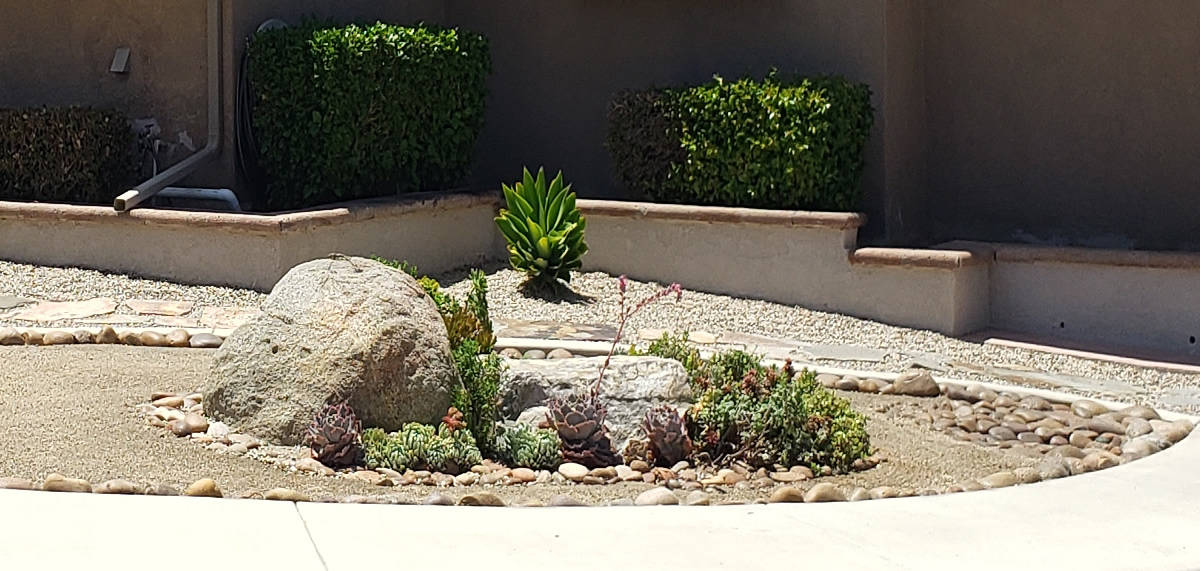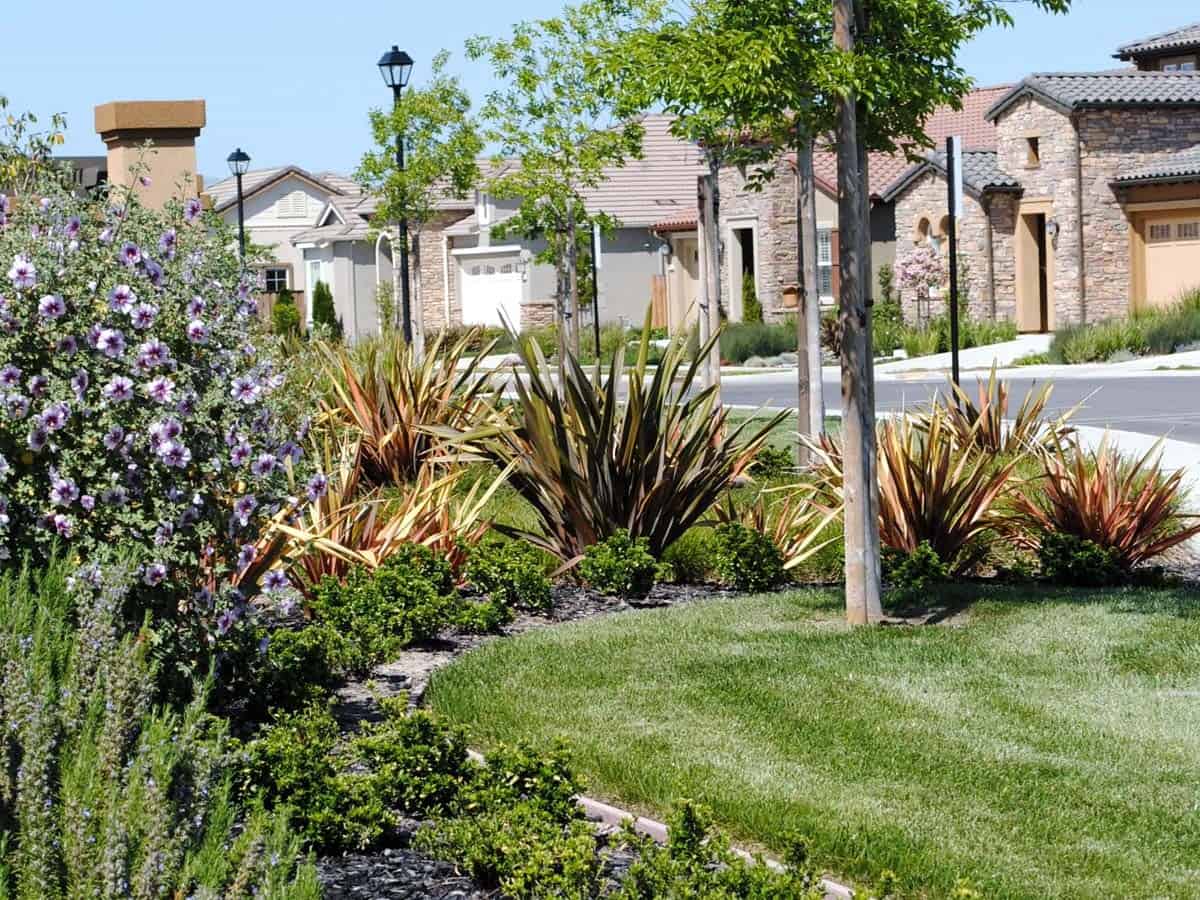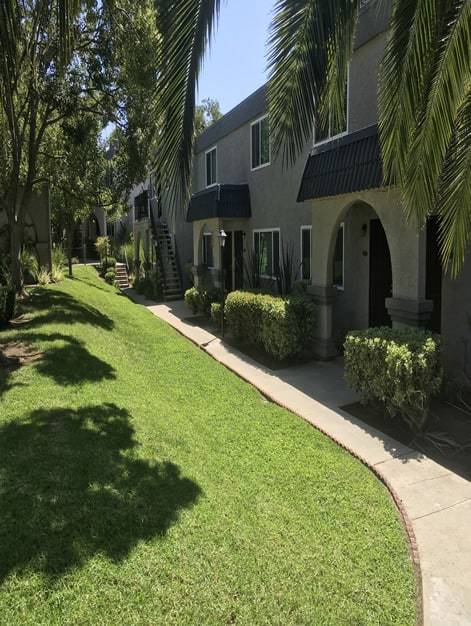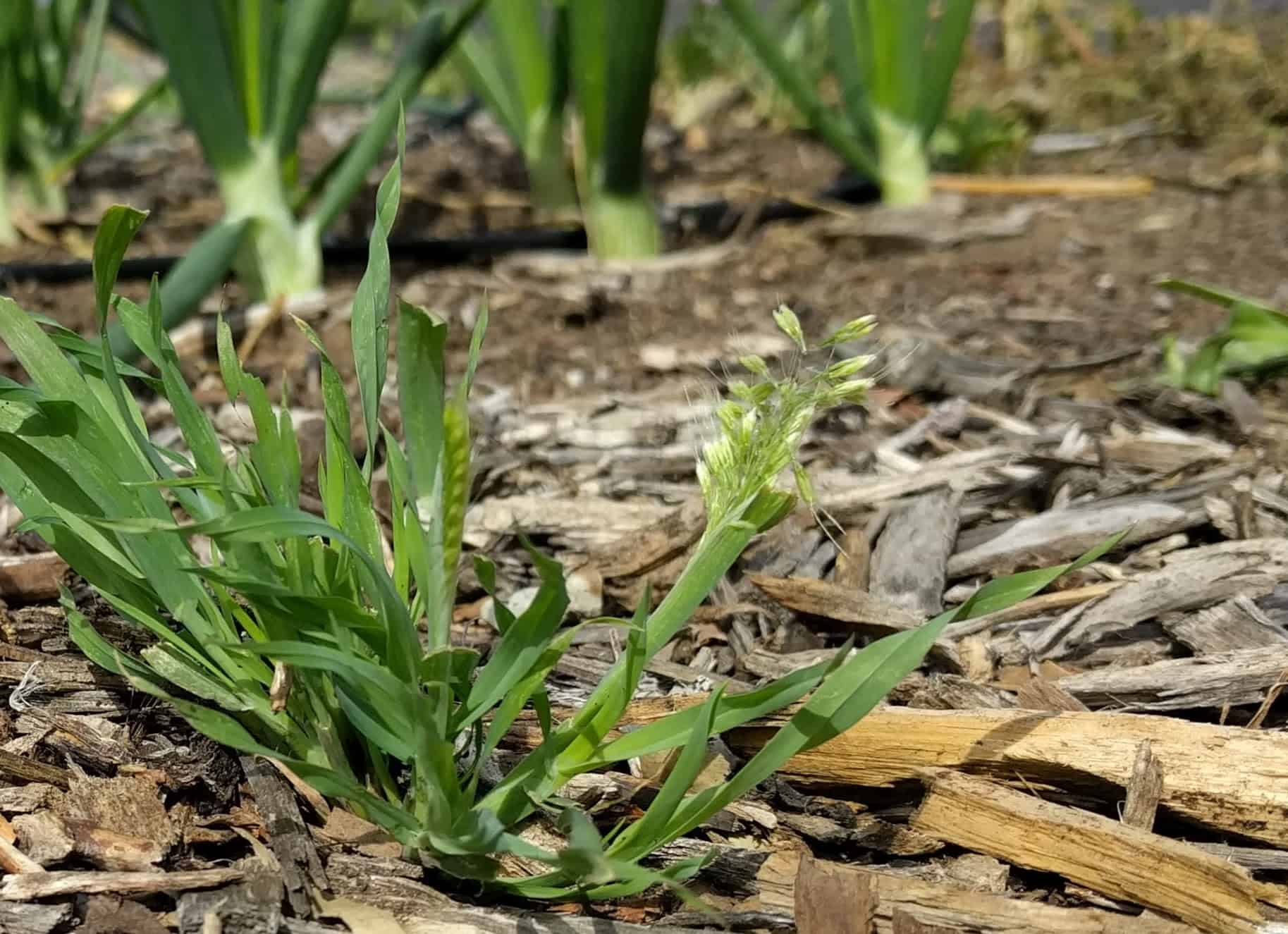When you live in California, you have undoubtedly heard that we are facing drought-like conditions. Southern California is one of the driest areas in the nation, and seems more “desert-like” every day. Let’s face it, do you remember the last time we got a good rain? This fact, along with our relatively high level of water consumption and our population growth, has brought water conservation to the forefront of those natural resource issues currently facing the state. In San Diego, approximately 65% of our annual culinary water consumption is applied to landscapes.
Our irrigated landscapes provide us with many benefits that include beautiful surroundings, natural cooling, and the cleansing of our environment. However, San Diego landscapes are often over-irrigated and a great deal of water conservation may be achieved by keeping a few water-wise landscaping principles in mind. At True Lawn Care we’re keeping water conservation at the top of our list as we design, install, and manage our landscape projects.
1. Planning and Design. The planning and design stage of landscaping provides you with the opportunity to consider and prepare for every aspect of your future landscape’s use.
Consider what you would like to achieve with your landscape. For example, will you need a play area for children and pets? Would you like to have a water feature to add personality?
Be sure to consider the natural attributes (or problem areas) of your property. Are there extremely sunny or shady areas? A steep hillside to consider? Are there very wet or dry areas?
When choosing plants, also remember that different plants have different water requirements, and you should group them accordingly. These groupings of plants are known as hydrozones.
2. Soil Preparation. The most basic component of your landscape is the soil and many landscape problems can be avoided if an adequate amount of time is spent on properly preparing the soil before the landscape is installed.
The types of plants that you are growing will have a bearing on the characteristics you require from the soil, but there are some general guidelines to follow. Two major concerns are adequate depth of topsoil and the quality of topsoil.
A depth of 8-12″ is ideal and will solve many problems in the future. New construction over the rocky soil we see naturally in San Diego, especially in the East County, presents additional issues. For topsoil quality guidelines, consult the experts at True Lawn Care.
3. Plant Selection. One of the most pleasurable aspects of landscaping is choosing the plants that appeal to you. Whether aesthetically, as with flowering plants, or practically, plant selection really depends on your personal taste.
Keep in mind that your plants should be grouped into hydrozones according to their water requirements. In water-wise landscaping, this is a key principle.
4. Practical Lawn Areas. Turfgrass is the plant that covers the majority of all landscaped areas in San Diego. It was easy to install over larger areas, and back when we had rain in San Diego, it made sense… and it allowed multi-use of our lawns – play and recreation and is an important design component of the traditional landscapes.
We recommend you avoid using turfgrass in areas that are hard to irrigate such as steep slopes or odd-shaped and narrow spaces. Always be aware of the use of the lawn area. If the area only receives traffic when it is mowed, perhaps another landscape choice is more appropriate.
5. Mulch. Mulching is one of the easiest and best things that you can do to be water-wise in your landscape. By mulching around trees and shrubs, moisture is retained in the soil, and weeds are discouraged. In addition, mulch tends to regulate the soil temperature making it a more stable environment for plant roots. Organic mulches like bark and inorganic mulches like stone are frequent choices.
One benefit of organic mulches is that they improve the organic matter content of the soil as they decay. This may be undesirable, however, for plants that require excellent drainage and dislike wetter soil conditions.
6. Irrigation Planning. By arranging your plants into hydrozones according to their water requirements, you have already begun the first steps in water-wise irrigation planning. Once your plants are arranged into hydrozones, you should plan your irrigation schedule to apply the appropriate amount of water to each of the zones.
You can learn a great deal about plant-water requirements simply by observation. Signs, such as wilting, will let you know when many landscape plants require watering, but be careful not to overdo it.
Plant roots need just as much air as water and you don’t want to drown them. If you are using an automatic irrigation timer, be sure to adjust it seasonally as the weather changes. A great deal of water is wasted when automatic irrigation systems are continually programmed for the hottest part of the summer without adjusting for times when temperatures are cooler and more natural precipitation is occurring.
Another important aspect of irrigation planning includes routine maintenance of the system with repairs as needed. Good irrigation management by True Lawn Care’s irrigation specialists will help you to find and repair any broken, misaligned, or clogged sprinkler heads, and keep your system running efficiently.
7. Landscape Maintenance. One of the most important components of a beautiful and lasting landscape is maintenance. Proper maintenance will keep your plants healthy and will also help to conserve water.
For example, by weeding regularly, your landscape plants will not have to compete with weeds for water. Also consider the fertility requirements of the plants in your landscape. Apply an adequate amount of nutrients, but do not over-apply fertilizers since that will create excessive growth that will increase your maintenance requirements. Excessive fertilization may also leave plants more susceptible to insects and diseases.
These seven principles provide the basis for creating a water-wise landscape of your own. Our landscape specialists are experts when it comes to applying water-wise principles to your lawn management. Get in touch with True Lawn Care Inc and see what we can do for you! True Lawn Care services will give you the perfect outdoor landscape you have always dreamed of, whether it be for a commercial or residential property. With our true lawn care, a water-wise, more enjoyable landscape has never been easier to achieve. Get in touch with us for your FREE lawn health evaluation.




